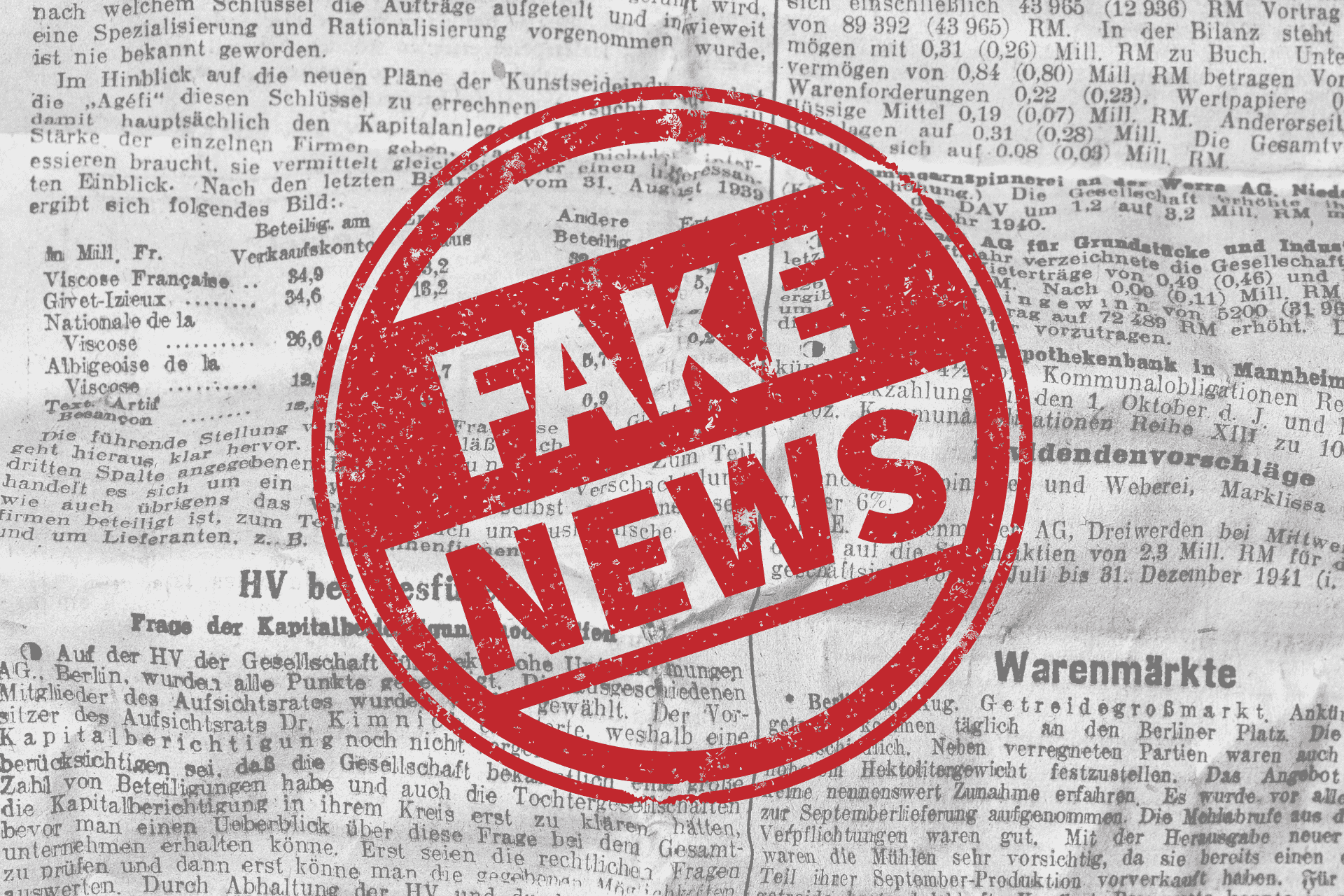
“Immigrants in Springfield, Ohio, were abducting and eating pets.”
“COVID-19 vaccines contain microchips that can cause infertility.”
“California wildfires in 2020 were intentionally set by Antifa activists.”
True or False?
Answer: False.
YET these claims spread rapidly across online platforms, often accepted as truth.
And these are only a small fraction of the fake news and misinformation released into the media daily — causing confusion, fear, and false beliefs among the public.
This raises an urgent question:
SHOULD WE CONTROL THE SPREAD
OF DISINFORMATION
Or more importantly, CAN we control it without violating the fundamental right to freedom of speech?
Were these false claims merely mistakes?
Or were they acts of deliberate deception and fraud?
Is it the responsibility of publishers to speak only the facts?
Or is it the responsibility of the public to distinguish between statements and reality?
How, then, do we know what is true and what is false?
Rising danger of fake news

FAKE NEWS is a deliberately fabricated information presented as legitimate news, and has become a serious and growing threat.
The internet, once hailed as a “new library” — a global haven of free information — has slowly transformed into a breeding ground for misinformation and fraud.
A 2024 study revealed that approximately 62% of online information and 40% of social media content could be false. Even more alarming, 86% of individuals worldwide report encountering fake news regularly.
But the reality is even worse than the numbers suggest.
We’ve witnessed it’s effects firsthand:
- The “Plandemic” video in 2020 falsely claimed that COVID-19 was a plot orchestrated by powerful elites.
- During Hurricane Helene, manipulated images of fake disaster victims circulated online, sowing confusion during rescue efforts.
- False studies about childhood vaccinations fueled fear, leading to vaccine hesitancy and outbreaks of preventable diseases.
- Love scandals and drug accusations destroyed the careers of celebrities, only to later be proven fabricated.
- In 2017, viral misinformation claimed that Planet Nibiru would collide with Earth on September 23, triggering a doomsday event — a baseless hoax that still caused widespread panic.
Each falsehood did not just mislead — it bred chaos, fear, and hatred.
Fake news has proven to be more than harmless rumours.
It is a force capable of destabilizing societies, breaking trust, and manipulation of the public’s voice
Should the media be regulated?

With the visible rise of fake news across the globe, many countries have taken steps to regulate information online:
- Singapore’s Protection from Online Falsehoods and Manipulation Act (POFMA) empowers authorities to order corrections or remove content deemed false, imposing fines up to $1 million and prison sentences of up to 10 years.
- Brazil’s proposed “Fake News Bill” mandates user identification on social networks and holds platforms accountable for the spread of false information.
- China’s Cybersecurity Law of 2017 and the Regulation on the Administration of Internet News Information Services allow authorities to arrest individuals for “rumour-mongering,” while blocking access to foreign media outlets like BBC, The New York Times, and CNN, and tightly monitoring platforms such as WeChat and Weibo.
But are these regulations truly supported?
Are they reasonable responses to a real threat?
Are they a direct violation of freedom of speech and a path straight to political censorship?
The concern is not just theoretical.
All these regulations, with their broad and often vague definitions of “fake news,” have raised alarm about the potential for abuse.
The public fears — with good reason — that these laws could become tools for silencing dissent rather than protecting truth.
History supports this fear: authoritarian leaders have long used media control to crush opposition.
Even today, countries like China and North Korea show us how so-called anti-misinformation laws can evolve into powerful weapons against free expression, punishing not falsehoods, but opinions critical of the government.
.
.
.
So then, how should the fake news be treated?
Should we leave fake news unchecked?
Or should we regulate it — even if it risks infringing on freedom of speech?
My Perspective:
With the explosive growth of online platforms, fake news has spun out of control, hiding under the excuse of “freedom of expression.”
But let’s ask ourselves:
WHAT IF we remove the word online platforms?
ARE people allowed to publicly announce that vaccines are life-threatening, without evidence?
ARE people allowed to falsely accuse others of crimes, like stealing or eating pets?
ARE people allowed to spread discriminatory lies targeting minorities?
ARE people allowed to fabricate events and create mass panic?
The answer is clear: No.
In Canada, Section 2(b) of the Canadian Charter of Rights and Freedoms protects:
“freedom of thought, belief, opinion and expression, including freedom of the press and other media of communication.”
However, this freedom is NOT ABSOLUTE
It can be legally limited when it involves: Hate speech,Defamation, Obscenity, Threats, False advertising
Fake news falls into the same category.
Deliberate deception that causes harm — whether by spreading fear, damaging reputations, or fueling discrimination — is not true expression; it is manipulation and fraud.
Therefore, with the right regulations, targeting intentional disinformation is not a violation of our rights.
It is a protection of truth, safety, and democracy.
Citation:
-
Associated Press. “Trump Campaign Falsely Accuses Immigrants in Ohio of Eating Pets.” AP News. Accessed April 20, 2025. https://apnews.com/article/romania-european-union-elections-disinformation-2cae1b28b5059b7cee228142eadaca78.
-
World Health Organization. “Vaccine Rumours Debunked: Microchips, ‘Altered DNA’ and More.” WHO.int. Accessed April 20, 2025. https://www.who.int/news-room/spotlight/10-myths-about-COVID-19-vaccines.
-
DemandSage. “Fake News Statistics in 2024: Top Data and Trends.” DemandSage. Accessed April 20, 2025. https://www.demandsage.com/fake-news-statistics/?utm_source=chatgpt.com.
-
DISA. “The Impact of Fake News: Statistics by Country, AI Influence, and Misinformation Trends.” Disa.org. Accessed April 20, 2025. https://disa.org/the-impact-of-fake-news-statistics-by-country-artificial-intelligence-influence-and-misinformation-trends/?utm_source=chatgpt.com.
-
Brown, Lee. “AI Deepfakes of Hurricane Helene Victims Circulate on Social Media.” New York Post, October 5, 2024. Accessed April 20, 2025. https://nypost.com/2024/10/05/us-news/ai-deepfakes-of-hurricane-helene-victims-circulate-on-social-media/?utm_source=chatgpt.com.
-
WatchMojo. “Top 10 Biggest Fake News Stories.” WatchMojo. Accessed April 20, 2025. https://www.watchmojo.com/articles/top-10-biggest-fake-news-stories/protester-was-paid-to-protest-trump-rally.
-
Associated Press. “Minnesota Law Targets Deepfakes as Concerns Over AI Misinformation Grow.” AP News. Accessed April 20, 2025. https://apnews.com/article/minnesota-deepfake-law-x-elon-musk-twitter-c423540850ca3837891d62d69c6639f1.
-
Wikipedia. “Brazilian Congressional Bill No. 2630.” Wikipedia. Accessed April 20, 2025. https://en.wikipedia.org/wiki/Brazilian_Congressional_Bill_No._2630?utm_source=chatgpt.com.
-
Simon Fraser University Library. “Fake News.” SFU Library Research Guide. Accessed April 20, 2025. https://www.lib.sfu.ca/help/research-assistance/fake-news.